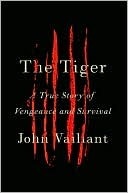More on this book
Community
Kindle Notes & Highlights
Because energy—i.e., food—is at a premium in the winter, labor-saving gifts of this kind are rarely refused. As long as the footpath, logging road, frozen river—or highway—is going more or less in the desired direction, other forest creatures will use it, too, regardless of who made it. In this way, paths have a funneling, riverlike effect on the tributary creatures around them, and they can make for some strange encounters.
Amur tigers have been known to eat everything from salmon and ducks to adult brown bears. There are few wolves in Primorye, not because the environment doesn’t suit them, but because the tigers eat them, too.
IN 1909, AN ESTONIAN-BORN BARON-TURNED-PHYSIOLOGIST NAMED Jakob von Uexküll introduced the concept of Umwelt to the world. Uexküll is considered one of the fathers of ethology, which is also known as behavioral ecology.
he speculated that the reason wolves seemed so much smarter than deer was that they would starve to death if they weren’t. While deer forage is stationary and abundant, wolf prey, by contrast, is not only highly mobile but doing its utmost to avoid being eaten. In order to succeed, predators must actively—and consciously—contrive successful hunting scenarios by adapting to, and manipulating, random events within a constantly shifting environment.
an environment inhabited by tigers is, by definition, healthy. If there is enough land, cover, water, and game to support a keystone species like this, it implies that all the creatures beneath it are present and accounted for, and that the ecosystem is intact. In this sense, the tiger represents an enormous canary in the biological coal mine.
John Goodrich, the longtime field coordinator for the Siberian Tiger Project, said it best: “For tigers to exist, we have to want them to exist.” Now more than ever.
Conservation of tigers and their habitat is not a priority in Moscow, so foreign funding is crucial to the efforts of these worthy organizations.


